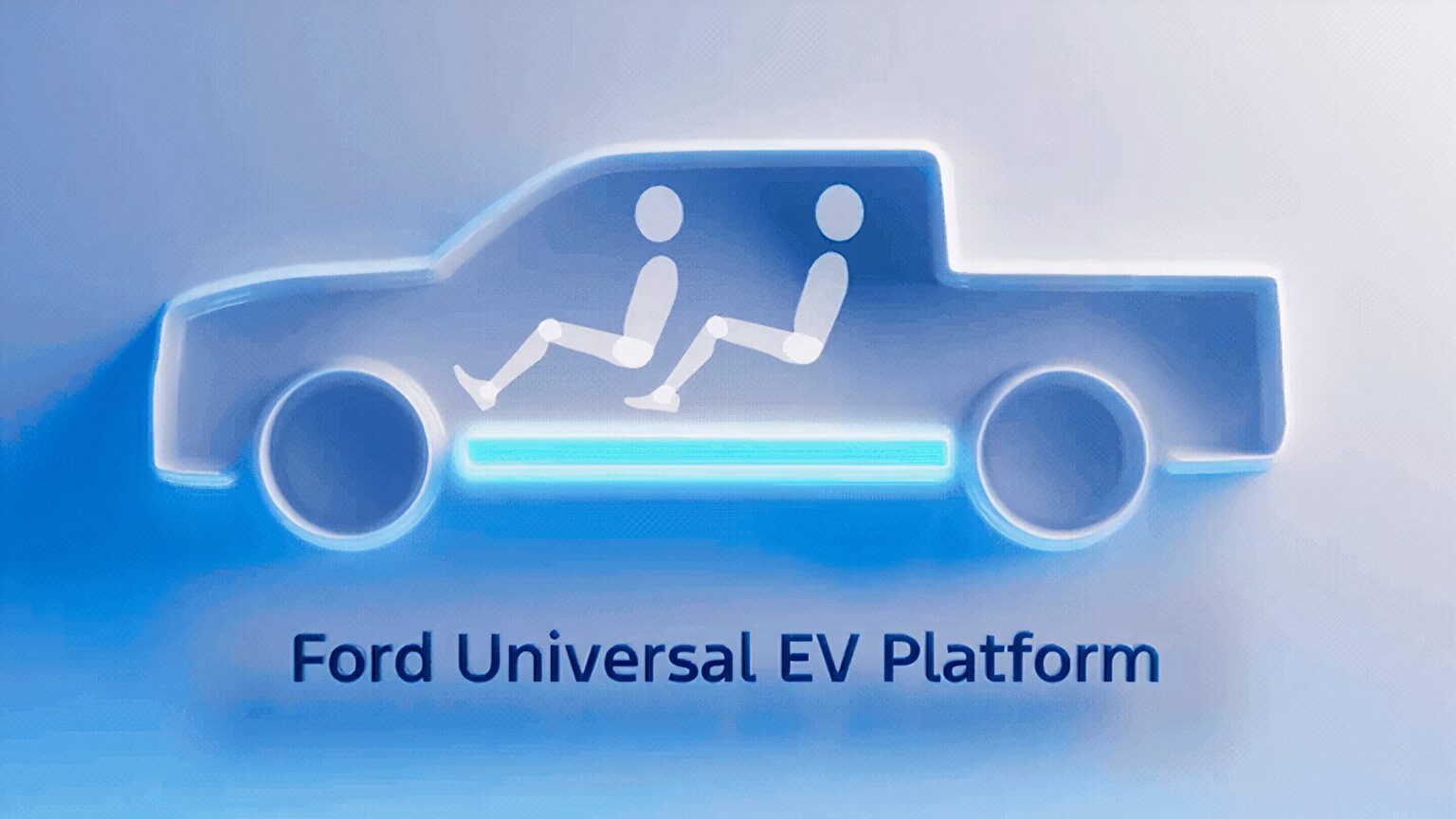Ford is about to reinvent itself—again. Today the carmaker announced the production of a new, $30,000 mid-sized electric pickup with the performance of the Mustang EcoBoost, but in a unique package that includes the crossover versatility of a Toyota’s RAV4.
There’s a reason Ford mentioned the RAV4 in today’s announcement. It happens to be the best-selling vehicle in America, and it cannot be lost on Ford that its own luster, relying so heavily on the F-150, is fading. Ford’s CEO, Jim Farley, said during the carmaker’s July earnings call that the company had to shift away from thinking that $60,000-$70,000 EVs were going to work, in a clear reference to the failed strategy behind the Lightning.
But looking at Toyota, a dominant player in hybrids, i.e., the RAV4, but also the Tacoma and Highlander, Ford’s pivot on EVs is both a bid to leapfrog Toyota—and also get out of its own way on costly EV production.
A $30,000 Pickup
By 2027 Ford plans to sell a midsize four-door electric pickup. Ford says they’re “targeting” a $30,000 price and that the truck will be made at their Louisville assembly plant (where they currently make the F-150).
Details include:
- As fast as a Mustang EcoBoost, which, for reference, means a 0-60 MPH time of 4.5 seconds. For a truck, that’s very quick indeed.
- As roomy as the Toyota RAV4. That means it’ll be a true midsize, and would segment above the current Ford Maverick.
- Clever storage, including an in-bed trunk that’ll fit (according to Ford) surfboards below the bed floor.
A Do-Over on Batteries
Ford clearly heard the messaging from would-be buyers that they’re worried that they’re environmentally somehow worse than the CO2 that comes from gas cars (factually untrue, but a persistent narrative). So for their new LFP batteries, they’re broadcasting that they’ll be made domestically, entirely free of nickel and cobalt. Further. They’ve made clear that EREVs are part of their future, meaning hybridization of a different sort, particularly for larger, heavier-duty use.
But their big advance will come from a new battery design of their own making, using less costly LFP chemistry. Crucially, the new battery forms the backbone of the vehicle structure.
It All Starts With a Modular Chassis—With Way Fewer Parts
We’ve all heard that EVs are way less complex than gas cars. But carmakers haven’t necessarily been changing the way the cars are assembled. Ford says that’s what it’s doing with their new, systemic approach. The idea is to make one core, central passenger cell, that includes the structure of the battery as a structural piece. As that module moves down the line the carmaker will add, say, a third row, or a pickup truck bed.
Ford says this approach allows making many cars on the same line, since every unit gets the same sub-structure.
Like Slate, the goal for Ford is to reduce the parts count—Ford says by 20 percent.
Citing one example, Ford, in an oddly-phrased statement, said the wiring harness in the new midsize truck “will be more than 4,000 feet shorter and 10 kilograms lighter than the one used in our first-gen electric SUV.” This is in reference to the Mach-E, where Ford has previously cited an under-investment in the development of that car’s expensive and massively over-cost wiring.
Software-Defined—Like Rivian and Tesla
The new EV systems approach promises to be “software-defined,” the latest buzzword in carmaking that’s along the lines of Rivian’s centralized software stack. Volkswagen invested in Rivian precisely because their legacy way of building cars—buying electronics from multiple vendors and then trying to knit all that together—is far too costly and complex.
Ford’s approach will mirror Rivian and Tesla. The entire software stack will be a single OS, which greatly reduces complexity and allows true over-the-air updates. In theory, this should also make non-mechanical over-the-air updates a seamless affair. And, much like Tesla, they can charge you more if you want more advanced BlueCruise beamed to your car.
TopSpeed’s Take
Ford has made some odd claims in this announcement. They said the resulting simplification of their new line of EV’s will lead to a “… lower cost of ownership over five years than a three-year-old used Tesla Model Y.” That’s a dog’s breakfast. What does it mean? Does it mean that the new vehicle won’t be as reliable in the first three years of ownership as that Tesla Model Y?
We don’t know. We do know that Ford has made some lofty targets. They mentioned that their tradition is to make vehicles around passionate customers, and that much is true. Ford has some very devoted customers around models like the Bronco, the F-150, and now the Maverick. Obviously, that’s true of Mustang.
But a very clear problem has stood in the way of Ford gaining a similar following with EVs—cost.
Ford has to be eying Chevy’s Equinox EV, which is rapidly stealing Tesla Model 3 sales, with some envy.
To leapfrog GM, catch Tesla, and compete with technology from China, which is really leading the software-defined vehicle and chassis development, will be a massive challenge. And by the way, Slate Auto is also pointing out the flaws in how all carmakers approach design and execution. The upshot: Ford’s “Model T Moment” is going to demand wholesale changes, not just in one factory or one battery plant, but across the entire company.
Read the full article here


